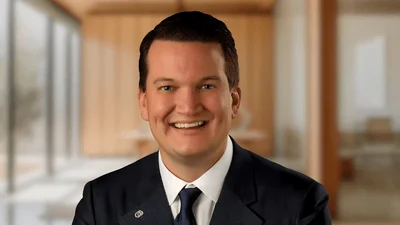OPRF District 200 Superintendent Joylynn Pruitt-Adams earns $225,000 in base salary per year. That's 42 percent more than the district superintendent earned in 1977. | District 200
OPRF District 200 Superintendent Joylynn Pruitt-Adams earns $225,000 in base salary per year. That's 42 percent more than the district superintendent earned in 1977. | District 200
The three major local government entities serving the Village of Oak Park have more than doubled their spending over the past 40 years, adjusted for inflation, according to an analysis by Local Government Information Services, which publishes West Cook News.
In 1977, the Village of Oak Park ($44 million), Oak Park River Forest High School District 200 ($30 million)) and Oak Park Elementary School District 97 ($52 million)) spent a collective $126 million, in 2017 dollars.
Last year, they spent $309 million, an increase of 145 percent.
That equates to a tab of $14,370 annually for each of Oak Park's 21,546 households.
Elementary School District 97 spending increased 213 percent in real dollars and OPRF District 200 rose 55 percent.
Village of Oak Park spending has risen 208 percent over four decades.
Had Oak Park local government spending grown only at the pace of inflation over the past four decades, property taxes in the community would be half of what they are now. But it grew 150 percent faster.
Oak Park's population has actually decreased 5 percent over the same period, from approximately 55,000 in 1978 to 52,008 today.
Local government salaries-- higher and higher...
This government spending increase has represented a massive transfer of wealth from Oak Park homeowners to Oak Park village and school district employees.
In short, their local government spending has doubled because their local government salaries have doubled. Or more.
In 1977, Oak Park Elementary District 97 teachers earned a base salary of $10,225, or $38,441 today.
District 97 base salaries have since doubled. Last year, they were $75,443, according to the Illinois State Board of Education.
District 200 base salaries in 1977 were $10,500, or $39,475 in 2017 dollars.
They have risen 150 percent to $101,291 today.
A 1979 Chicago Tribune report described District 200 teacher salaries as "excellent" and among the highest in the Chicago area.
Yet, OPRF teachers had no collective bargaining agreement like they do today.
"If we would take a vote on collective bargaining, there would be maybe three teachers in favor," the Tribune quoted physics teacher Joseph Meyer as saying.
Administrators have seen large salary increases, too.
District 200's Superintendent Jack Swanson earned $42,100 in 1977, or $158,275 in 2017.
Current District 200 Superintendent Joylynn Pruitt-Adams earns $225,000 per year, 42 percent more than Swanson did.
Pruitt-Adams, in fact, presides over a high school with 25 percent fewer students-- 3,300 vs. 4,260 in 1977.
Oak Park taxpayer spending on police and fire was $5.3 million in 1977, the equivalent of $21.4 million today.
Last year, the village spent $33.6 million, an increase of 57 percent.
Village administrative expenses rose even faster. They were $863,260 in 1977, or $3.5 million, versus $6.02 million today, an increase of 72 percent.
Oak Park property tax rates: twice the national average
The analysis comes amid the formation of a citizens' group that is searching for solutions to the often impossibly high property tax bills that come with homeownership in Oak Park.
According to Blockshopper.com, Oak Park's median home sale price in 2017 was $330,000 and its median property tax bill was $9,267, or an effective property tax rate of 2.81 percent.
The national average is 1.2 percent; Illinois' statewide average is 2.3 percent.
If Oak Park residents paid Illinois' average, the median homeowner would pay $7,590, or $1,677 less per year.
If they paid Indiana's median effective property tax rate of 0.87 percent, they would pay $2,871, or $6,390 less annually.
Indiana also has public schools and municipal governments that offer public services-- including public safety institutions like police and fire departments.
It also has a hard 1 percent property tax cap, drawing a stark contrast to its neighbor.
The Chicago-based Homeowners' Defense Association is pushing for a hard 1 percent property tax cap in Illinois.
The group's mission is to stop "families from being priced out of their homes by unfair and unaffordable property taxes," according to Brandi McGuire, its executive director.
"Property taxes have created a crisis in suburbs like Oak Park," McGuire said. "They are so high that it's become the equivalent of paying two mortgages-- one to the bank and another to the government. And what's worse-- they are only going to get higher."
----
40 years, 145 percent more local government spending
Oak Park homeowners are chafing under exorbitant property taxes.
How much more do their local governments spend today than they did in 1977?
| 1977 | 1977 | 2017 | ||
| Unit of Government | Budget | Budget | Budget | % CHG |
| Nominal | Real | Real | ||
| Village of Oak Park | $11,642,180 | $43,768,883 | $134,671,448 | 208% |
| Oak Park-River Forest District 200 | $12,925,207 | $52,280,969 | $80,775,143 | 55% |
| Oak Park District 97 | $7,444,122 | $30,110,613 | $94,174,289 | 213% |
| TOTALS | $32,011,509 | $126,160,465 | $309,620,880 | 145% |
Sources: Illinois State Board of Education; Village of Oak Park; Illinois State Comptroller.






 Alerts Sign-up
Alerts Sign-up